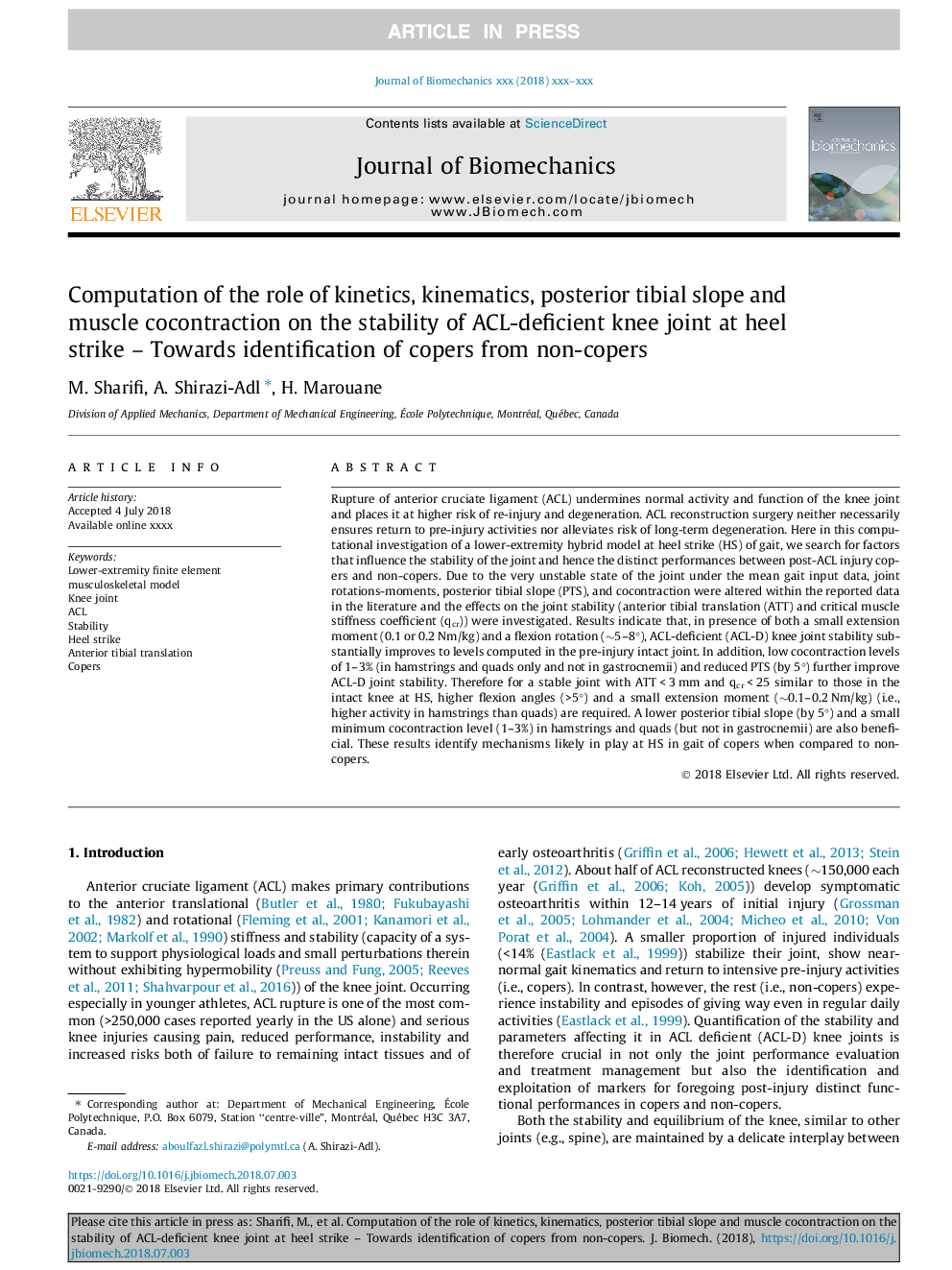| کد مقاله | کد نشریه | سال انتشار | مقاله انگلیسی | نسخه تمام متن |
|---|---|---|---|---|
| 7235641 | 1471087 | 2018 | 12 صفحه PDF | دانلود رایگان |
عنوان انگلیسی مقاله ISI
Computation of the role of kinetics, kinematics, posterior tibial slope and muscle cocontraction on the stability of ACL-deficient knee joint at heel strike - Towards identification of copers from non-copers
دانلود مقاله + سفارش ترجمه
دانلود مقاله ISI انگلیسی
رایگان برای ایرانیان
کلمات کلیدی
موضوعات مرتبط
مهندسی و علوم پایه
سایر رشته های مهندسی
مهندسی پزشکی
پیش نمایش صفحه اول مقاله

چکیده انگلیسی
Rupture of anterior cruciate ligament (ACL) undermines normal activity and function of the knee joint and places it at higher risk of re-injury and degeneration. ACL reconstruction surgery neither necessarily ensures return to pre-injury activities nor alleviates risk of long-term degeneration. Here in this computational investigation of a lower-extremity hybrid model at heel strike (HS) of gait, we search for factors that influence the stability of the joint and hence the distinct performances between post-ACL injury copers and non-copers. Due to the very unstable state of the joint under the mean gait input data, joint rotations-moments, posterior tibial slope (PTS), and cocontraction were altered within the reported data in the literature and the effects on the joint stability (anterior tibial translation (ATT) and critical muscle stiffness coefficient (qcr)) were investigated. Results indicate that, in presence of both a small extension moment (0.1 or 0.2 Nm/kg) and a flexion rotation (â¼5-8°), ACL-deficient (ACL-D) knee joint stability substantially improves to levels computed in the pre-injury intact joint. In addition, low cocontraction levels of 1-3% (in hamstrings and quads only and not in gastrocnemii) and reduced PTS (by 5°) further improve ACL-D joint stability. Therefore for a stable joint with ATTâ¯<â¯3â¯mm and qcrâ¯<â¯25 similar to those in the intact knee at HS, higher flexion angles (>5°) and a small extension moment (â¼0.1-0.2â¯Nm/kg) (i.e., higher activity in hamstrings than quads) are required. A lower posterior tibial slope (by 5°) and a small minimum cocontraction level (1-3%) in hamstrings and quads (but not in gastrocnemii) are also beneficial. These results identify mechanisms likely in play at HS in gait of copers when compared to non-copers.
ناشر
Database: Elsevier - ScienceDirect (ساینس دایرکت)
Journal: Journal of Biomechanics - Volume 77, 22 August 2018, Pages 171-182
Journal: Journal of Biomechanics - Volume 77, 22 August 2018, Pages 171-182
نویسندگان
M. Sharifi, A. Shirazi-Adl, H. Marouane,